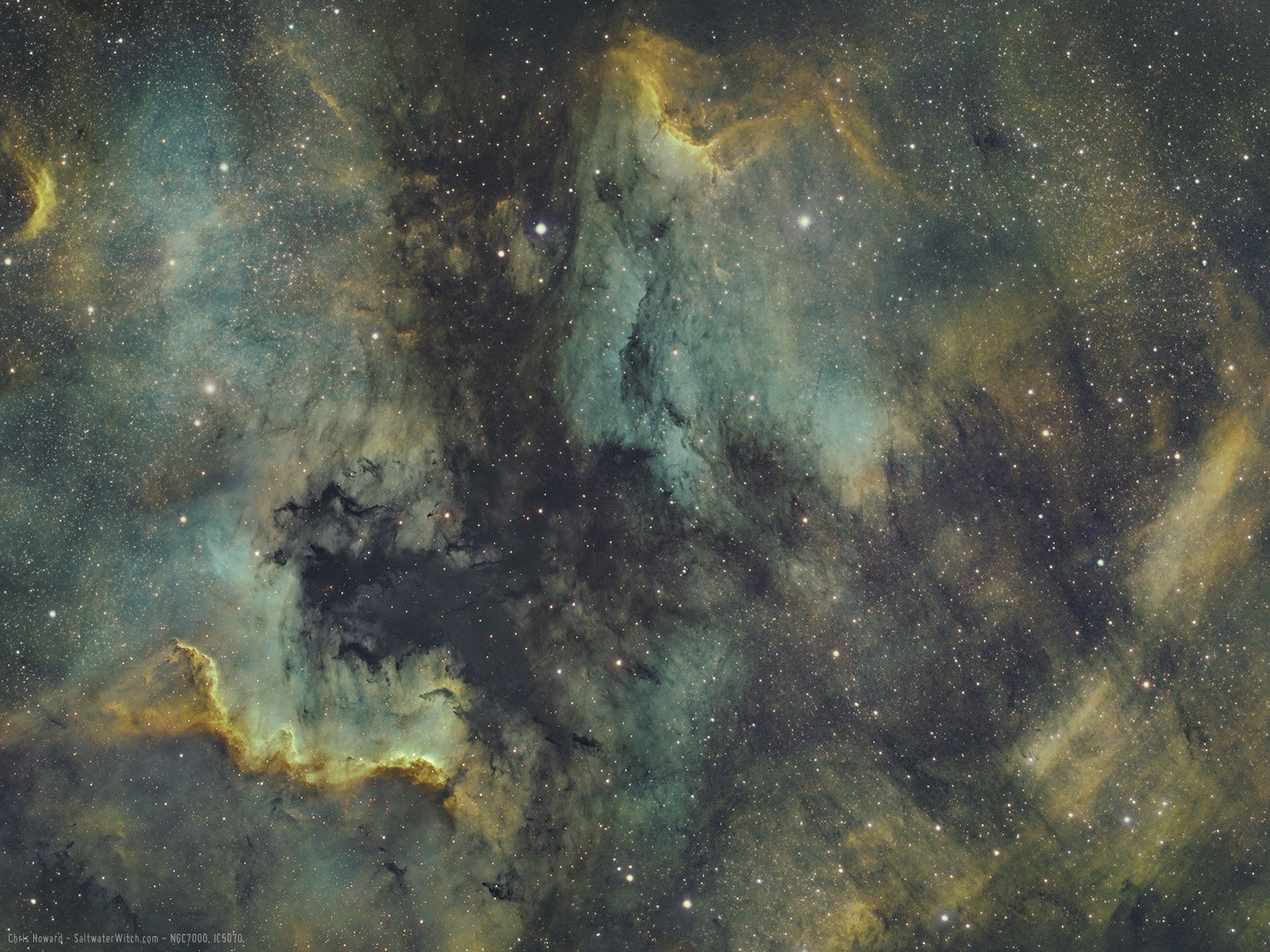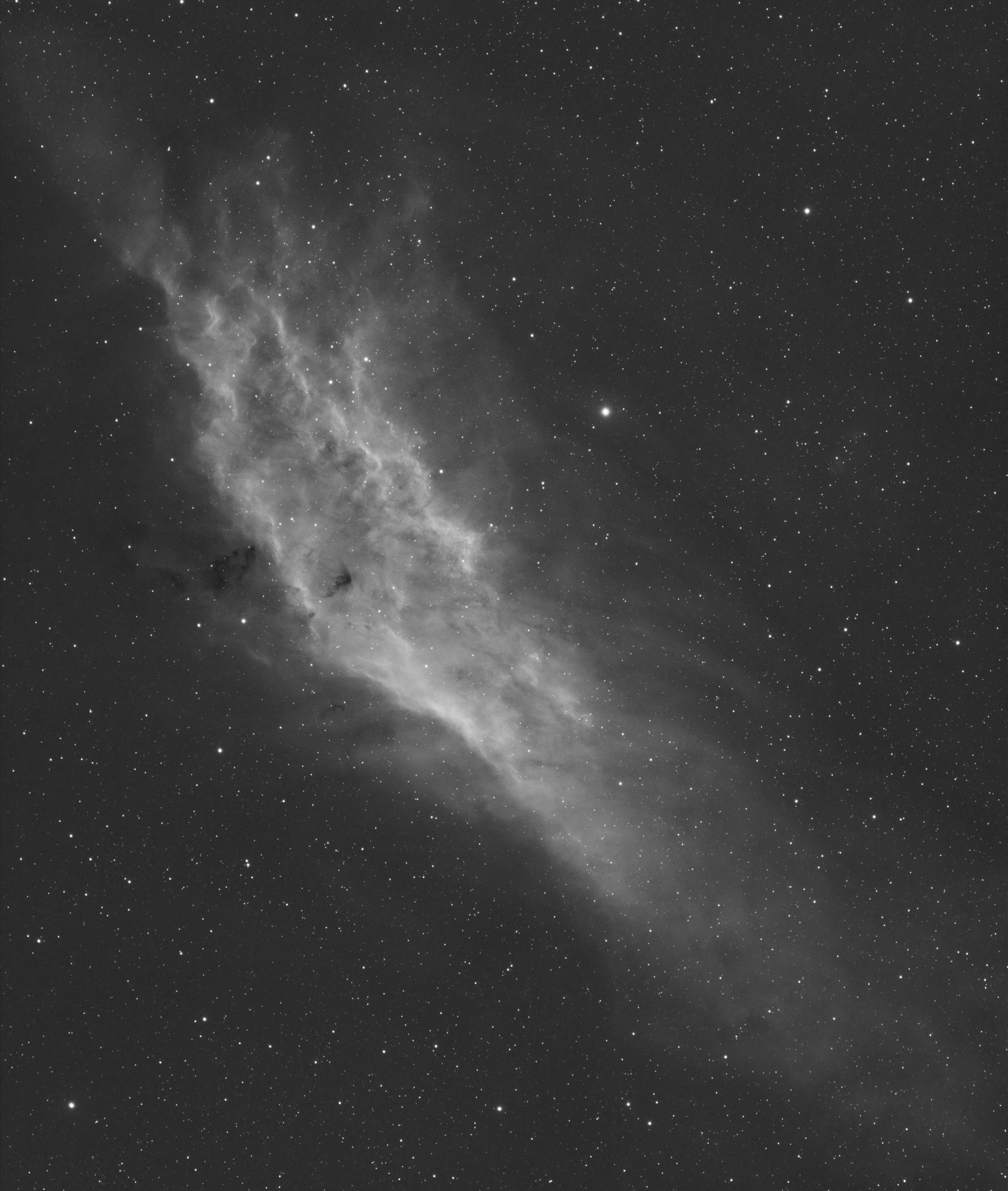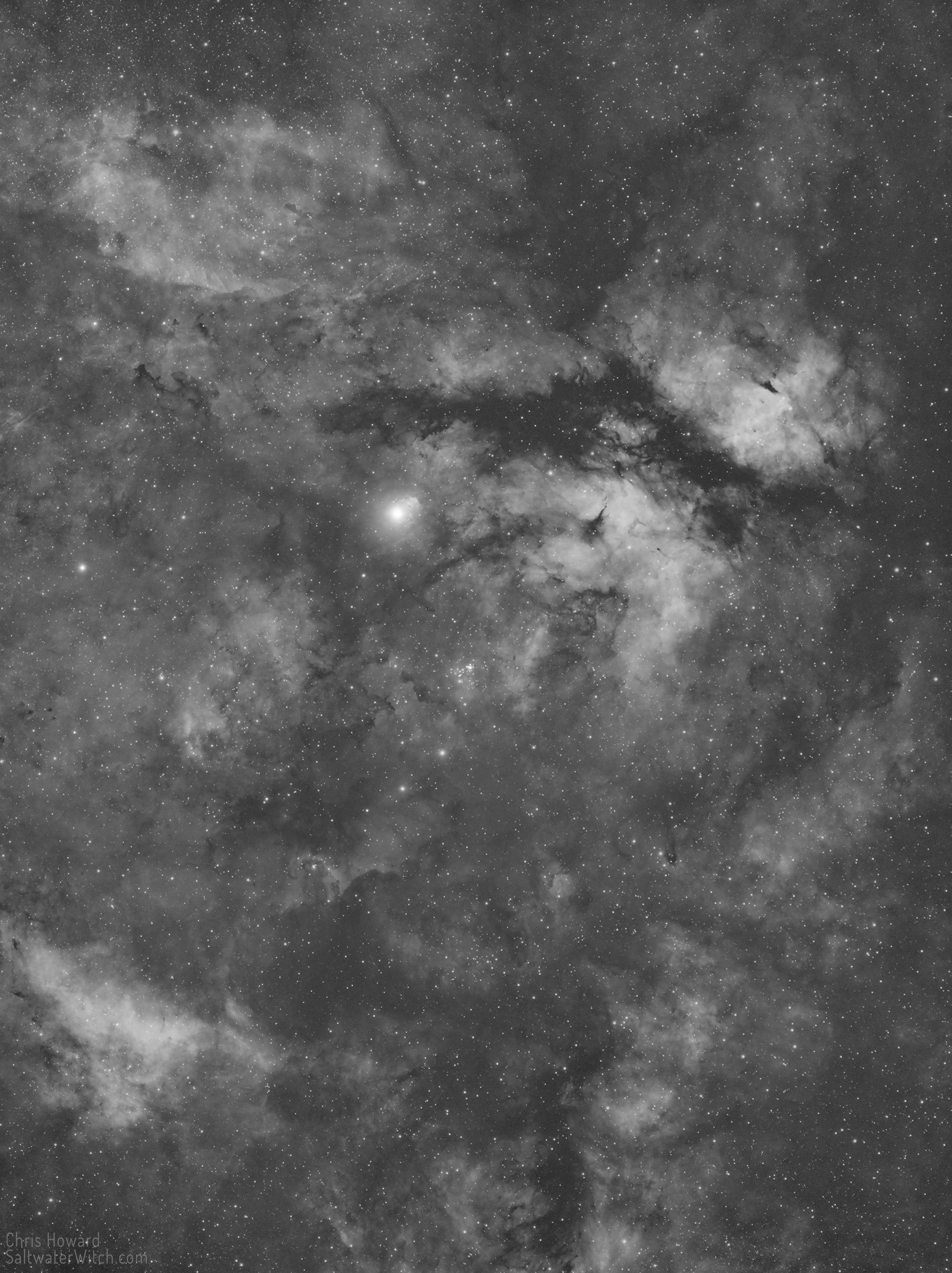NGC 1499 in Ha
The California Nebula (NGC 1499) in the constellation Perseus. Imaging notes: 3nm Antlia Pro hydrogen-alpha filter, William Optics SpaceCat 51 Apochromatic refractor, ZWO ASI1600MM-Pro monochrome camera.
Posted September 5, 2022
The moon is bright and the clouds are fast
So, I've been goofing around with hardware, updated NINA and plugins, getting ready for the next clear night. It's raining right now. I was looking at some narrowband data for Sharpless 2-199 (Soul Nebula) I captured late last year and reprocessed the Ha data. I am especially fascinated by the differences in depth and darkness between the background and the bands of dust and interstellar gasses that twist in front of the Soul Nebula, between us and the high-energy emission of the towering clouds of hydrogen beyond. Someone commented (I think on AstroBin) on another image of mine with similar properties—that I needed to bring up the black point, that the night sky is black. But why? Who says so? The data says the background isn't as dark as the dust, so why would I want to lose that difference?

Posted June 17, 2022
Messier 16 in Ha with the "Pillars of Creation"
The famous "Pillars of Creation" from the classic Hubble (HST) image are in the core of the Eagle Nebula (Messier 16). It's no Hubble image, but still crazy what I can capture with a 250mm refractor from my backyard in New Hampshire. Here's the famous "Pillars of Creation" Hubble image: https://upload.wikimedia.org/wikipedia/commons/6/68/Pillars_of_creation_2014_HST_WFC3-UVIS_full-res_denoised.jpg
This is a crop from the larger image with the Swan Nebula from last week. Notes: 36 x 240 second subs stacked in DSS, processed in PS2022. William Optics SpaceCat 51 Apo Refractor 250mm f/4.9, Astronomik 6nm Ha filter, ZWO ASI1600MM-Pro monochrome camera, Sky-Watcher EQ6-R Pro equatorial mount.
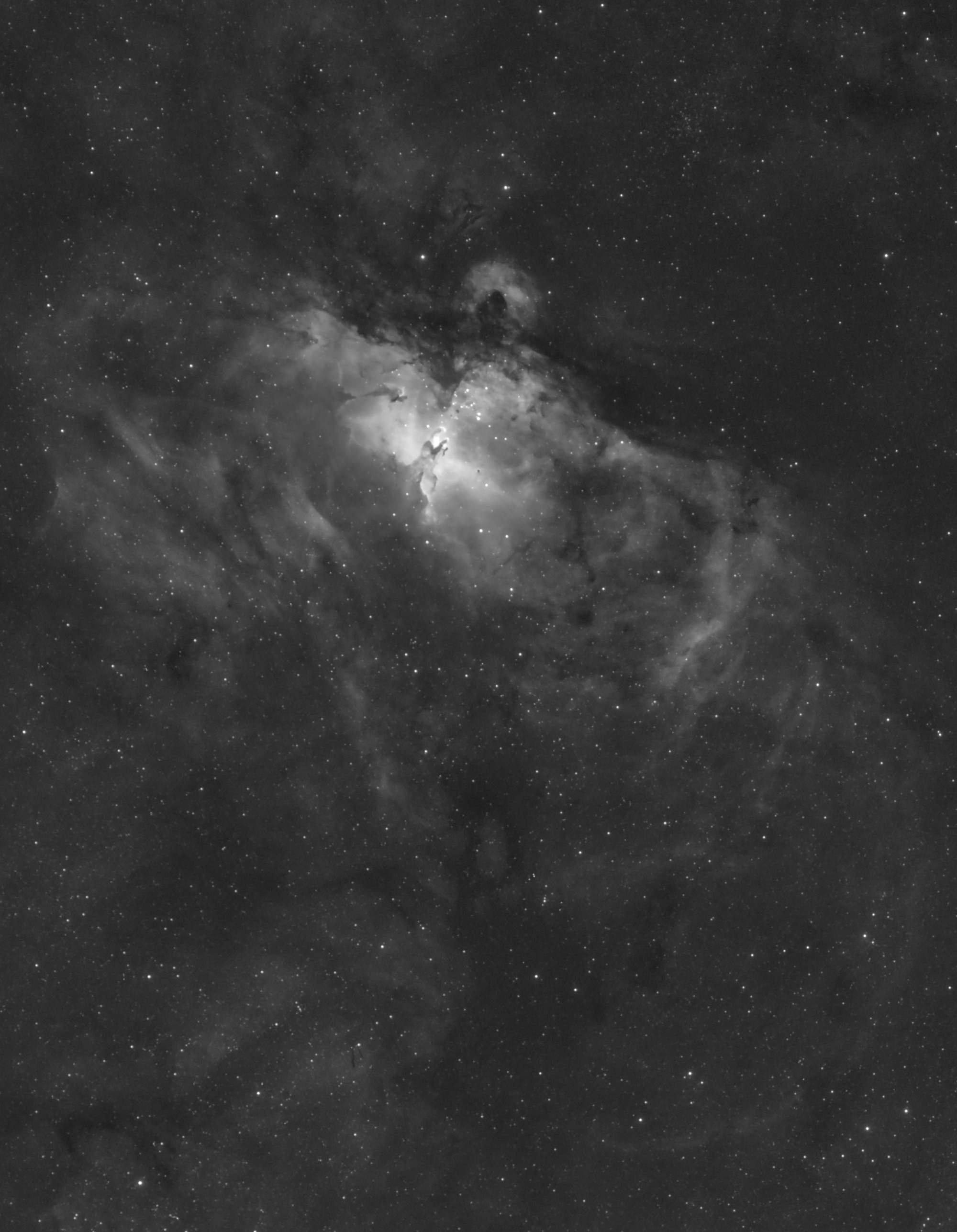
Posted June 10, 2022
The Sadr Region (IC 1318) in Hydrogen-alpha
Astronomik 6nm Ha filter, 42 x 240 second subs stacked in DSS. Click the image for the full view
Posted June 7, 2022
Starless Parrot Nebula and Seagull Nebula
Narrowband NGC 2327 "Parrot Nebula" and IC 2177 "Seagull Nebula" with the stars removed. NGC 2327 and IC 2177 are part of a large HII emission region between the constellations Monoceros and Canis Major, 3700 light-years away. The outstretched wings of the "Seagull Nebula" (SH2-296, IC 2177) are over 100 lightyears in length. The "Parrot Nebula" (IC 2327, SH2-292, GUM 1) is the bright boxy structure in the middle with the dark jagged dust lane running up the center. Imaging Notes: 60 x 240sec subs stacked in DSS and processed in PSCC2022. William Optics GT81 Apochromatic Refractor 392mm at f/4.7, Moonlite focuser, ZWO ASI1600MM-Pro monochrome camera, Astronomik 6nm Ha filter, SkyWatcher EQ6-R Pro mount, Controller: Raspberry Pi 4 running INDI/KStars/Ekos.

NGC 2327, IC 2177 with stars:

Posted May 21, 2022
The Iris Nebula
The Iris Nebula (NGC7023, Caldwell 4) is a reflection nebula in Cepheus. Notes: 51 x 240 second subs. Apertura 8 inch f/4 800m FL Imaging Newtonian, ZWO ASI071MC color camera, GSO Coma Corrector, SkyWatcher EQ6-R Pro mount, Stellarmate/Raspberry Pi 4 running INDI/Ekos/KStars.

Posted May 20, 2022
Narrowband "Flying Bat" Nebula in Ha (sans squid)
I finally started gathering Hydrogen-alpha data for the Flying Bat nebula (Sh2-129) in the constellation Cepheus. What you do not see in Ha is the large, squidlike structure of oxygen that stretches from the top corner of the Bat, through those bright stars, to about the middle of the nebula For the "Squid Nebula" (OU4) I need to come back on another night to capture the OIII. The small circular reflection nebula at the top left is vdB-140. The dark nebula on the right is Barnard 152.
Notes: 67 x 300 second subs, stacked in DSS. Gear: William Optics SpaceCat51 Apo Refractor, ZWO ASI1600MM-Pro mono camera, Antlia Pro 3nm Ha filter, Sky-Watcher EQ6R Pro equatorial mount.
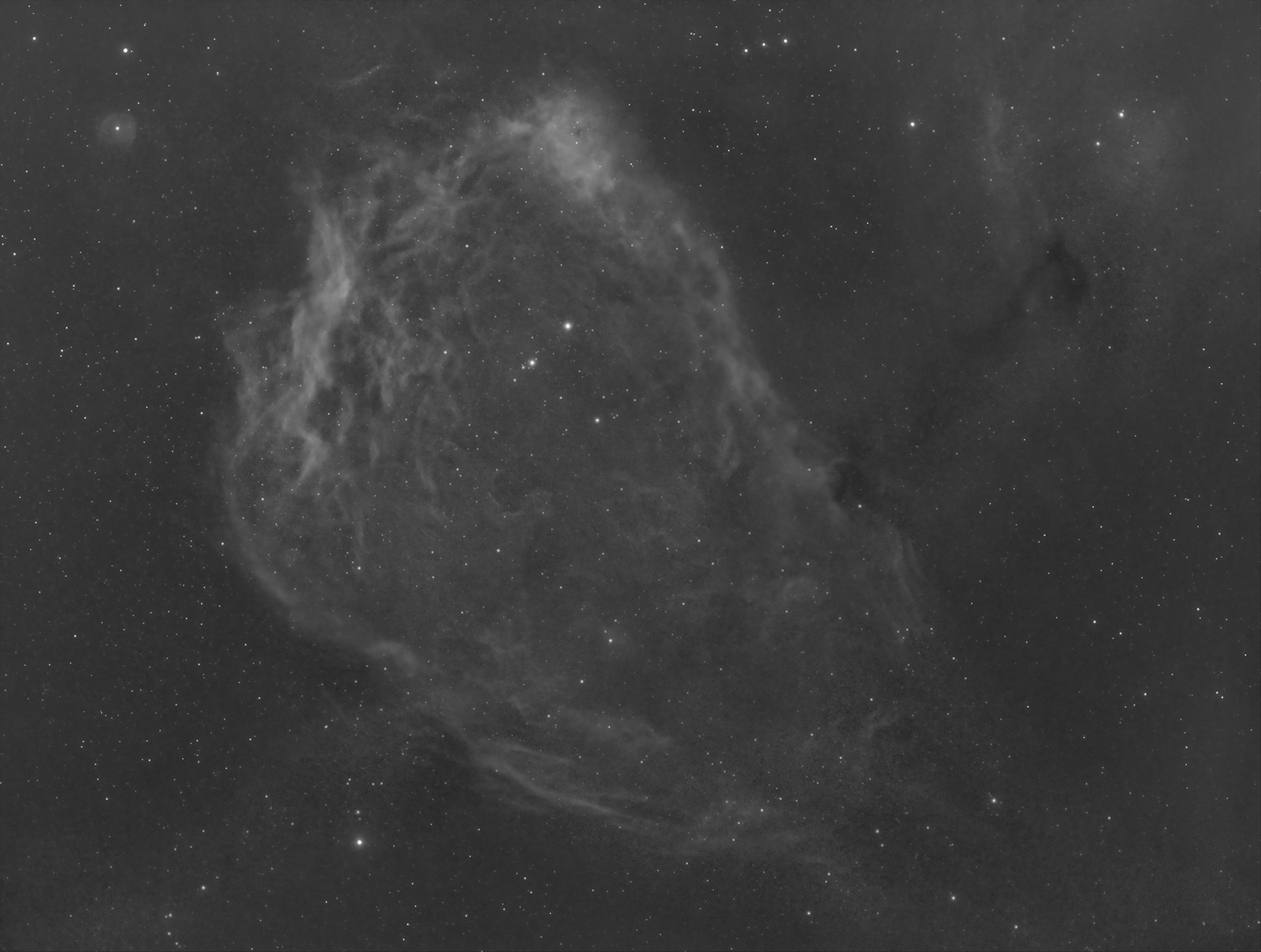
Posted May 12, 2022
NGC 7000, IC 5070
North America Nebula (NGC 7000, left) and Pelican Nebula (IC 5070, top right) in the constellation Cygnus. Narrowband in the SHO palette. 68 x 240 second subs in Ha, OIII, SII. I kept the Hydrogen (green) levels pretty even.
